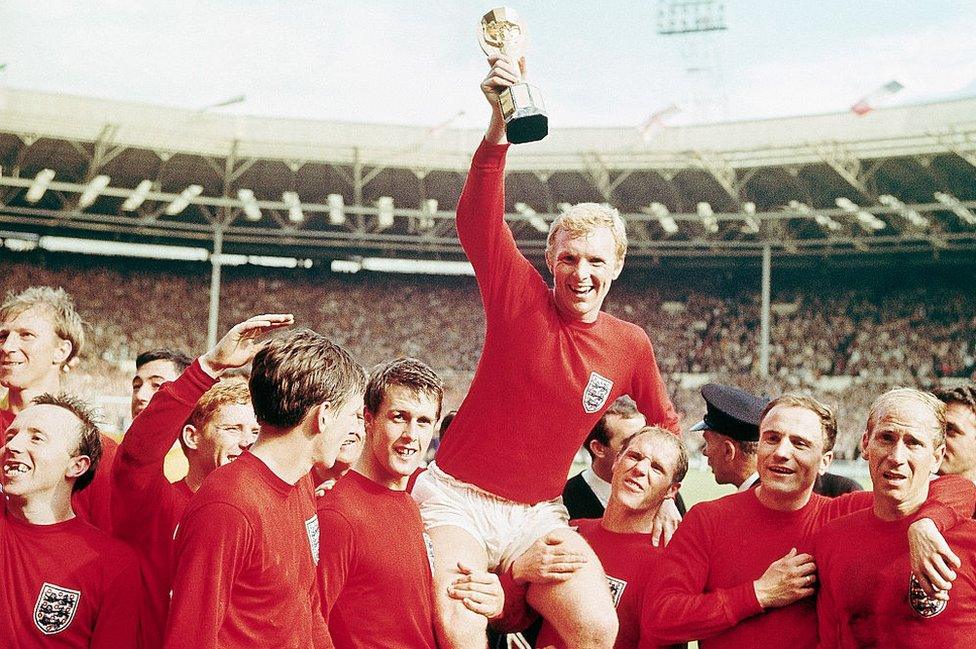
The Glory Years
Ron Greenwood was appointed as Fenton's successor in 1961 and soon led the club to two major trophies, winning the 1964 FA Cup Final. The team was led by the young Bobby Moore. West Ham also won the European Cup Winners' Cup the following year. During the 1966 World Cup, key members of the tournament winners England were West Ham players, including the captain, Bobby Moore; Martin Peters (who scored in the final); and Geoff Hurst, who scored the first hat-trick in a World Cup final. All three players had come through the youth team at West Ham.
There is a "Champions" statue in Barking Road, opposite The Boleyn Tavern, commemorating West Ham's "three sons" who helped win the 1966 World Cup: Bobby Moore, Geoff Hurst and Martin Peters. Also included on the statue is Everton's Ray Wilson.
After a difficult start to the 1974–75 season, Greenwood moved himself "upstairs" to become general manager and, without informing the board, appointed his assistant John Lyall as team manager. The result was instant success – the team scored 20 goals in their first four games and won the FA Cup, becoming the last team to win the FA Cup with an all-English side when they beat Fulham 2–0 in the 1975 final. The Fulham team included two former England captains, Alan Mullery and West Ham legend Bobby Moore. Lyall then guided West Ham to another European Cup Winners' Cup final in 1976, though the team lost the match 4–2 to Belgian side Anderlecht. Greenwood's tenure as general manager lasted less than three years, as he was appointed to manage England in the wake of Don Revie's resignation in 1977.
In 1978, West Ham were again relegated to the Second Division, but Lyall was retained as manager and led the team to victory in the 1980 FA Cup final with a 1–0 win against Arsenal, the most recent time a team from outside the top flight has won the FA Cup. They reached the final by defeating Everton in the semi-final. West Ham were promoted to the First Division in 1981, and finished in the top ten of the First Division for the next three seasons before achieving their highest-ever league finish of third in 1985–86; a group of players which came to be known as The Boys of 86.